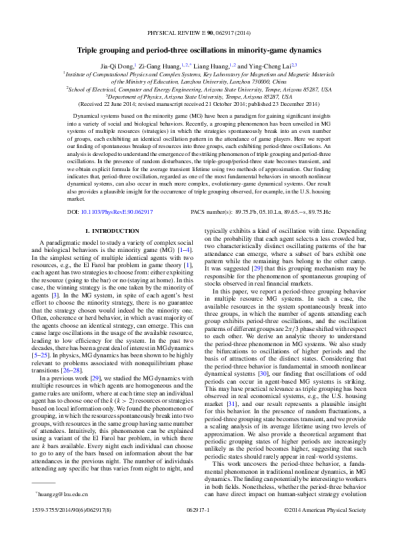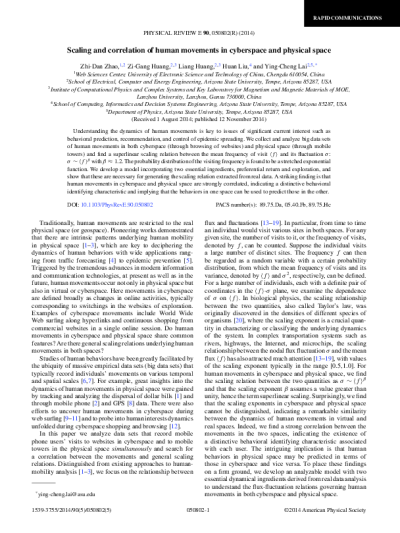Triple Grouping and Period-Three Oscillations in Minority-Game Dynamics

Dynamical systems based on the minority game (MG) have been a paradigm for gaining significant insights into a variety of social and biological behaviors. Recently, a grouping phenomenon has been unveiled in MG systems of multiple resources (strategies) in which the strategies spontaneously break into an even number of groups, each exhibiting an identical oscillation pattern in the attendance of game players. Here we report our finding of spontaneous breakup of resources into three groups, each exhibiting period-three oscillations. An analysis is developed to understand the emergence of the striking phenomenon of triple grouping and period-three oscillations. In the presence of random disturbances, the triple-group/period-three state becomes transient, and we obtain explicit formula for the average transient lifetime using two methods of approximation. Our finding indicates that, period-three oscillation, regarded as one of the most fundamental behaviors in smooth nonlinear dynamical systems, can also occur in much more complex, evolutionary-game dynamical systems. Our result also provides a plausible insight for the occurrence of triple grouping observed, for example, in the U.S. housing market.
- Author (aut): Dong, Jia-Qi
- Author (aut): Huang, Zi-Gang
- Author (aut): Huang, Liang
- Author (aut): Lai, Ying-Cheng
- Contributor (ctb): Ira A. Fulton Schools of Engineering





